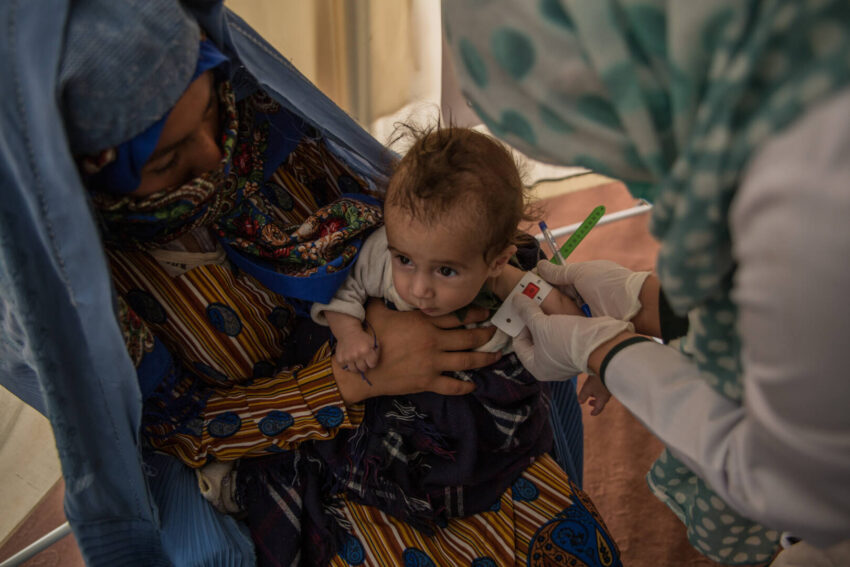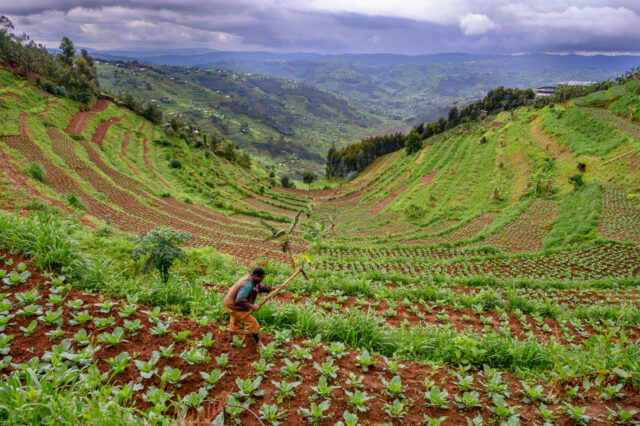Asuntha Charles is the national director of World Vision Afghanistan. With more than 15 years of experience in humanitarian assistance and community development, she is a strong advocate for women’s and children’s rights. Asuntha shares about the hunger crisis facing Afghan children and families.
***
If you were starving and you knew that selling one of your kids could prevent the others from dying, would you do it?
For a moment, let’s put aside the shocking reality that in Afghanistan you can purchase a child, a practice that’s now increasing in response to the dire hunger situation in the provinces where World Vision’s emergency response staff work.
Instead, I was thinking of the awful choices mothers and fathers are forced to make. I recall David Beasley, executive director of the United Nation’s World Food Programme (WFP), pleading on BBC News for world and business leaders to step up and donate.
“Imagine that this was your little girl or your little boy, or your grandchild about to starve to death. You would do everything you possibly could,” he said. For most of us, it comes down to a decision to donate. For Afghan parents, it’s the choice of which child to sell for food.
Help children and families affected by the crisis in Afghanistan.
The situation in Afghanistan is so bad that my dedicated national emergency response staff — while running food aid programs in remote areas — have now set up an in-office fund to support families so they can stop selling their children.
Although these practices took place before the Taliban came to power, they’ve now worsened due in part to the hunger crisis. My staff recently even heard of one father who tried to leave his children at a mosque, such was his desperation. This is happening because food assistance programs like those we run, which meet the needs of many thousands, are being outpaced by the growing numbers of people facing starvation. Many of the previous activities run to protect vulnerable children have also not been able to restart following the change in national leadership.
Afghanistan is now facing its worst hunger crisis in living memory. The latest stats show that 22.8 million people — 55% of the population — are facing acute levels of food insecurity and malnutrition, and children are dying due to starvation.
An estimated 8.7 million Afghan children and adults will be on the brink of starvation by March 2022. If this happens, untold numbers of children will be begging, married off into violent homes, forced into dangerous and exploitive work, and pulled from school.
Winter is now what everyone fears, as things will get much worse, fast. Snowfall will prevent access to remote areas, which could remain cut off from assistance for many months. We’re very quickly running out of time to get food aid into villages that will soon become inaccessible.
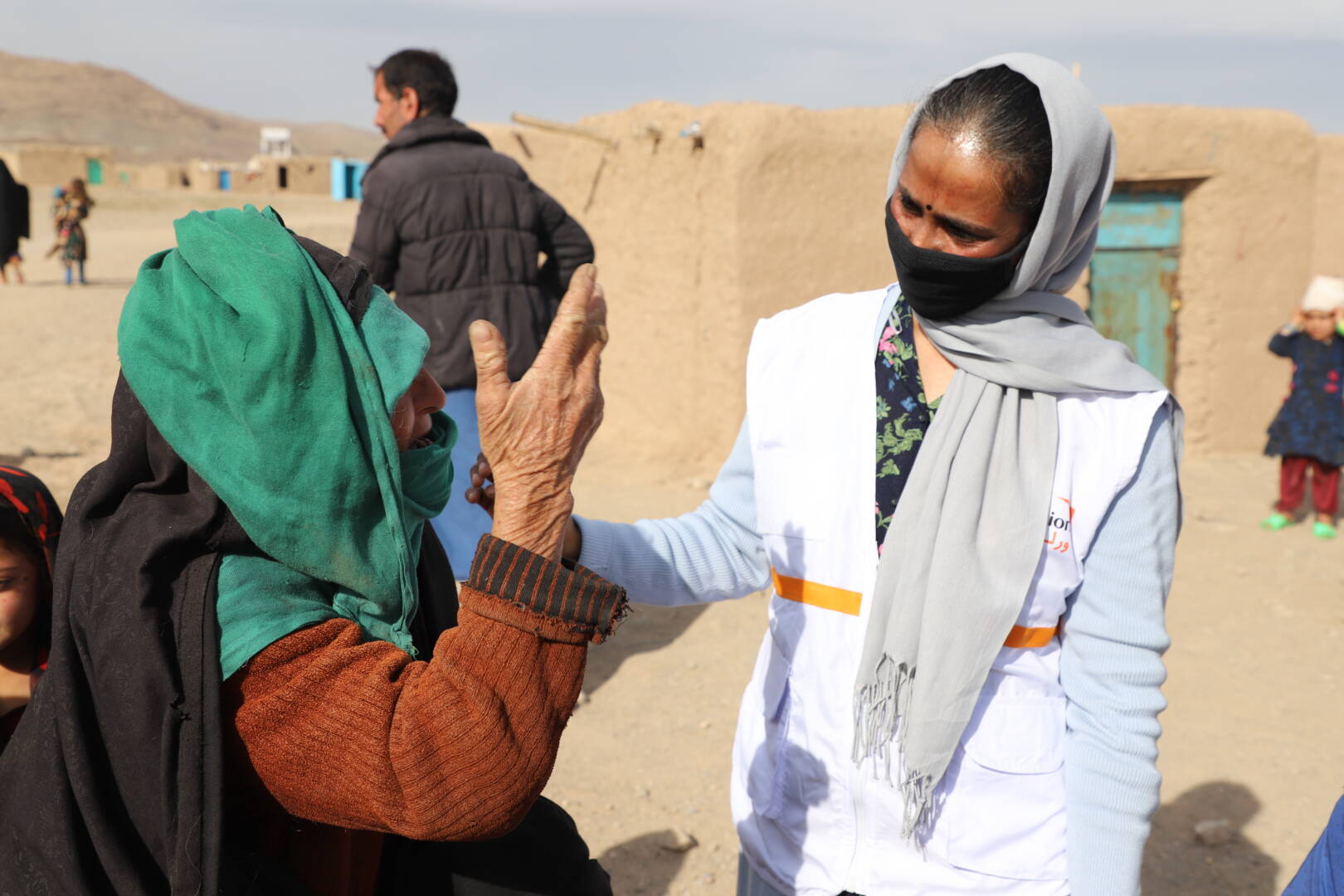
World Vision has worked in Afghanistan for 20 years, undertaking a range of humanitarian and development work, but the most critical activities at this moment include providing emergency nutrition through 21 mobile health clinics. Of the 3,600 children under 5 we treated in clinics in the Herat and Ghor provinces in October, 808 had moderate acute or severe acute malnutrition, and 2,694 received treatment for acute respiratory infections.
The medical staff in these clinics serve the most vulnerable, including people displaced by conflict and who live in poverty. It’s heartbreaking to visit these clinics and meet young mothers who share stories of their struggles to survive on almost nothing.
Medical staff measure the arms of children as an indicator of how malnourished they are. The weakest get sent to specialist nutrition wards in hospitals. Those wards are filling with children, sometimes several to a bed, and deaths are increasingly commonplace.
Globally, World Vision is the World Food Programme’s largest implementing partner. The WFP gives us food to distribute in the remote and mountainous provinces where we work in western Afghanistan. All of these are marked “emergency” red on a map managed by global food security experts who have assessed the food situation. In fact, most of Afghanistan is now red — and one phase away from a darker shade that signifies “catastrophe” or “famine.”
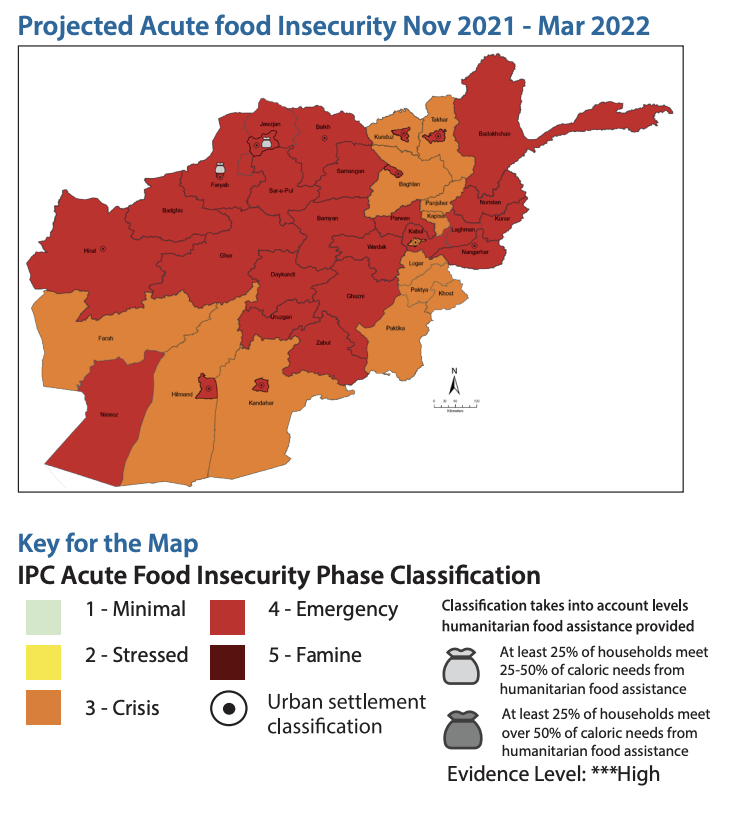
The situation was already bad before the Taliban took control of Kabul in August. Drought and conflict that had displaced tens of thousands created the initial conditions for this crisis. But an already bad situation has significantly worsened.
International funding that supported crucial sectors such as health, education, and development has largely been suspended. The health system imploded due to the World Bank halting normal funding for salaries and running costs of hospitals and clinics. And sanctions, counterterrorism measures, and restrictions placed on cash flows to Afghanistan have resulted in a funding and liquidity crisis.
The people of Afghanistan are now paying a punishing price for these restrictions, which have created a new class of urban hungry who are jobless and facing an economy in free fall. Half of all children under 5 — around 3.2 million — were expected to suffer from acute malnutrition by the end of 2021. About 1 million children are at risk of dying without immediate life-saving treatment.
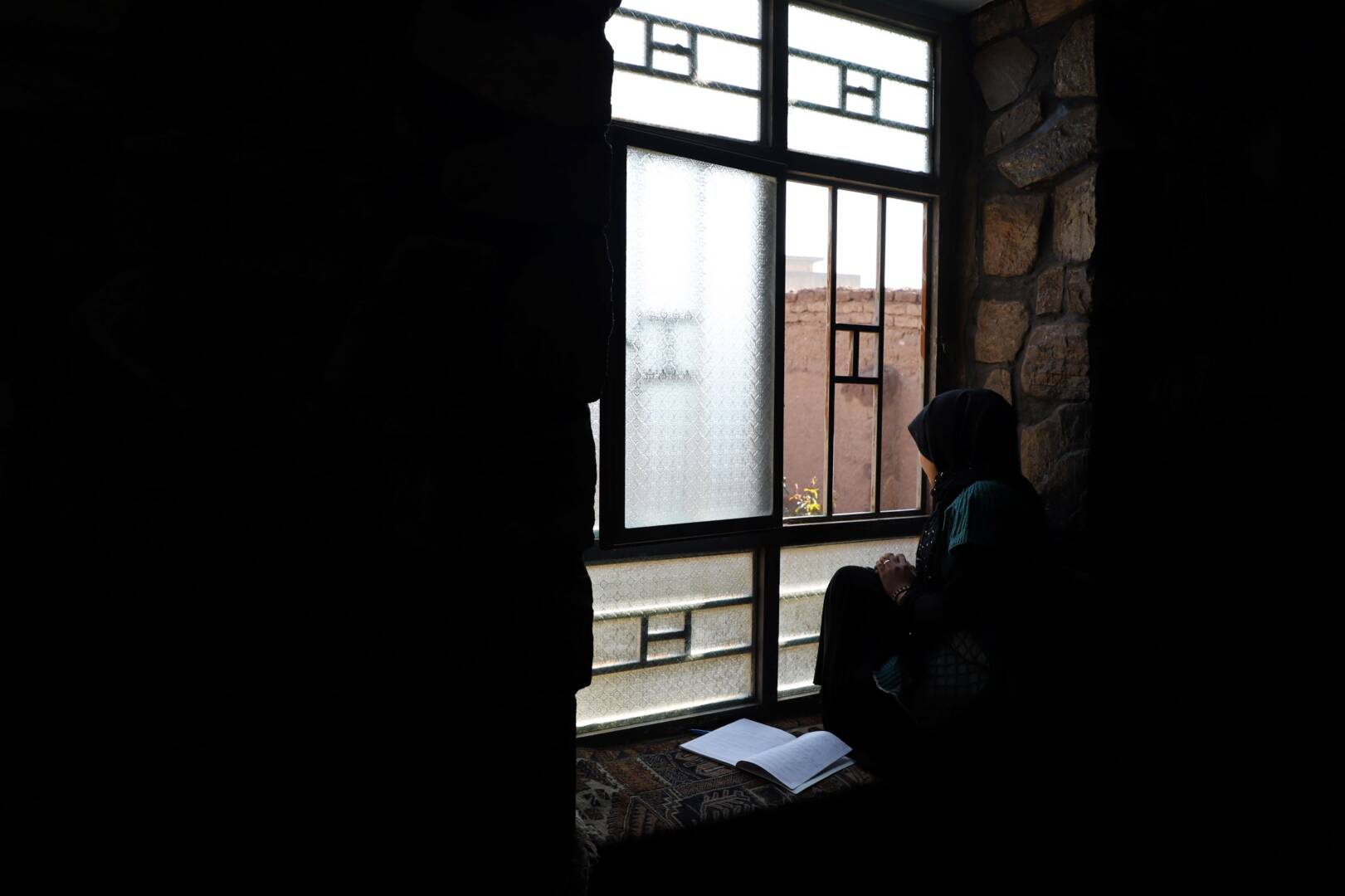
Thousands of people each day are trying to leave Afghanistan to escape the crisis or to find work and send money home. Left unaddressed, this crisis could provoke mass migration in the same way that conflict and food aid cuts drove the Syrian refugee crisis back in 2015.
It will take a massive international commitment and undertaking — among those humanitarian aid organizations and U.N. agencies still in Afghanistan — to feed people over the coming months.
Although more than $1 billion was recently pledged by donor governments following an outpouring of support and global attention, the U.N.’s humanitarian appeal for Afghanistan remains underfunded. More than $200 million per month is needed to keep the pipeline of food aid running. World Vision has reached more than 120,000 people with WFP food assistance since the start of October, and we’re ready to scale up.
While people in many countries celebrate winter holidays and the start of a new year, children in impoverished Afghan villages will continue to starve, or to be so weakened by malnutrition that they die of diseases like tuberculosis and respiratory infections.
Please join World Vision in our continued efforts to ensure that children won’t go hungry and families won’t have to make impossible choices like whether to sell their child for food.
The time to act is now.
